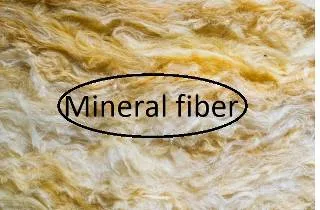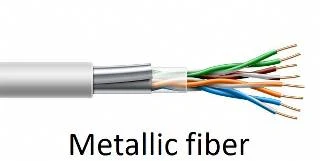Mineral fiber
The second natural fiber is mineral fiber. Although it is a naturally occurring
fiber, it can also be a slightly modified fiber derived from minerals. Mineral fiber can be classified into
three categories as follows-
i.
Asbestos: Asbestos is the only naturally occurring mineral fiber like
serpentine, amphiboles, and anthophyllite.
ii.
Ceramic Fiber: Examples of ceramic fibers are glass fiber, aluminum oxide,
silicon carbide, and boron carbide. Glass wood, and quartz can be classified
into glass fiber groups.
iii. Metal Fiber: Aluminum fiber is one of the examples of the metal fiber family.
Properties of mineral fiber
i.
It does not deteriorate in normal usage,
ii.
It is not attacked by insects or microorganisms,
iii.
It is used in fireproof clothing, conveyor belts,
iv.
It is used in brake linings, gaskets, industrial packing, and electrical windings,
v.
It has good insulations properties
vi.
It has good soundproofing properties.
vii.
It has been a serious health hazard and removed from the textiles market.
viii.
It is a fibrous form of silicate of magnesium and calcium-containing iron and
aluminum and other minerals
ix.
It is acid-proof, flame-proof, and rust-proof.
x.
Its particles are carcinogenic and hence its use is restricted.
Chemical composition
Silicon
Dioxide - (52-56) %
Calcium
Oxide - (16-25) %
Aluminum
oxide - (12-16) %
Boron
Oxide - (8-13) %
Sodium
&Potassium Oxide - (0-1) %
Magnesium
Oxide - (0-6) %
Types of mineral fiber
There
are different types of mineral fiber we found. Used for asbestos and basalt
fiber vinyl tiles, sheeting and adhesives, "transit" panels and
siding, acoustic ceilings, stage curtains, and fire blankets. Various mineral fibers
such as below-
a.Glass fiber: Glass fiber is a material consisting
of numerous extremely fine fibers of glass. It is used in the production of ironing board and mattress covers, ropes, and cables, reinforcement fiber for
composite materials, insect netting, flame-retardant, and protective fabric, and soundproof, fireproof, and insulating fibers. Glass fibers are woven and coated
with telephones to make beta fabrics, a virtual fireproof fabric that replaces
nylon on the outer layer of the U.S. space suite since 1916.
b. Metallic fiber: Metal fibers are fibers made of metal,
metal alloys, plastic-coated metals, fibers made with a core completely covered
by metal-coated plastic or metal. As a source of textile and garment
applications, gold, and silver fibers have been used as yarn for fabric
decoration since ancient times. Most recently, aluminum yarn, aluminized
plastic yarn, and aluminized nylon yarns have been replaced by gold and silver.
Today's metallic fiber industry mainly supplies fiber in stainless steel, nickel, titanium, copper, and aluminum for various applications. Metal filaments can be coated with a transparent film to reduce damage. Metal fibers can also be shaved from wire (steel wool), shaved from foil, bundles drawn from large diameter wire, mixed from a knot, cast from molten metal, or grown around a seed (usually carbon). There is a wide variety of uses for metal fibers, metal foil, and metal wire, including the manufacture of gold fabrics and jewelry. Hardware cloth is a thick woven mesh of steel wire, which is used in construction. It’s a lot like standard window screening but heavier and more open weaved.
c. Carbon fiber: Carbon Fibers with a diameter of about
5-10 micrometers and consisting mostly of carbon atoms have different
advantages including higher hardness, high tensile strength, low weight,
high-temperature toleration, huge
chemical resistance, and low thermal expansion. These features have made carbon
fiber very popular in aerospace, civil engineering, military, and motorsports,
among other competitive sports. However, these are relatively expensive when
compared with similar fibers such as glass fibers or plastic fibers.
Applications of mineral fiber
Applications
of mineral fibers are-
i.
Mineral fiber is thermal and acoustic insulation
ii.
It is used as fire protection
iii.
It is used to make the fireproofing instrument
iv.
It is used as artificial fireplaces and materials
v.
Asbestos-reinforced building board
vi.
It is used as reinforcing concrete, tiles
vii.
Asbestos-reinforced cement products
viii.
It is used as plastic products like vinyl floor tiles
ix.
It is used in textiles
x.
It is used as brake linings
xi.
It is used as a potholder and ironing board pads
xii.
It is used as patching and spackling compounds
xiii.
It is used as pipe and duct insulation
xiv.
It is used as building insulation and friction materials
xv.
It is used as gaskets and packing materials
xvi.
It is also used as roofing felts, and roofing materials. ... Etc.












0 Comments